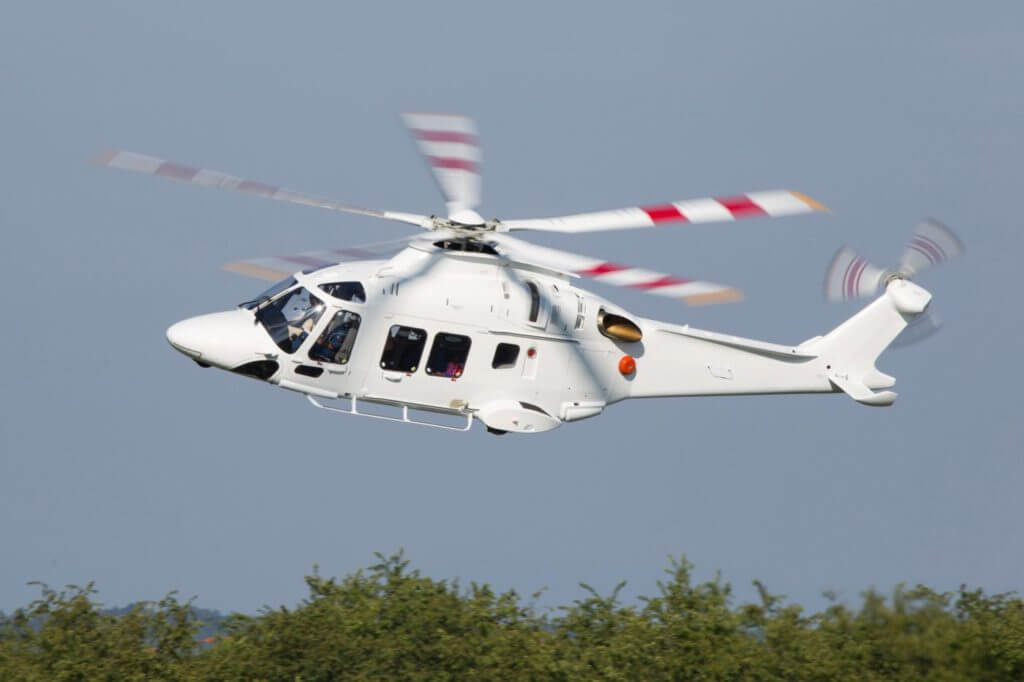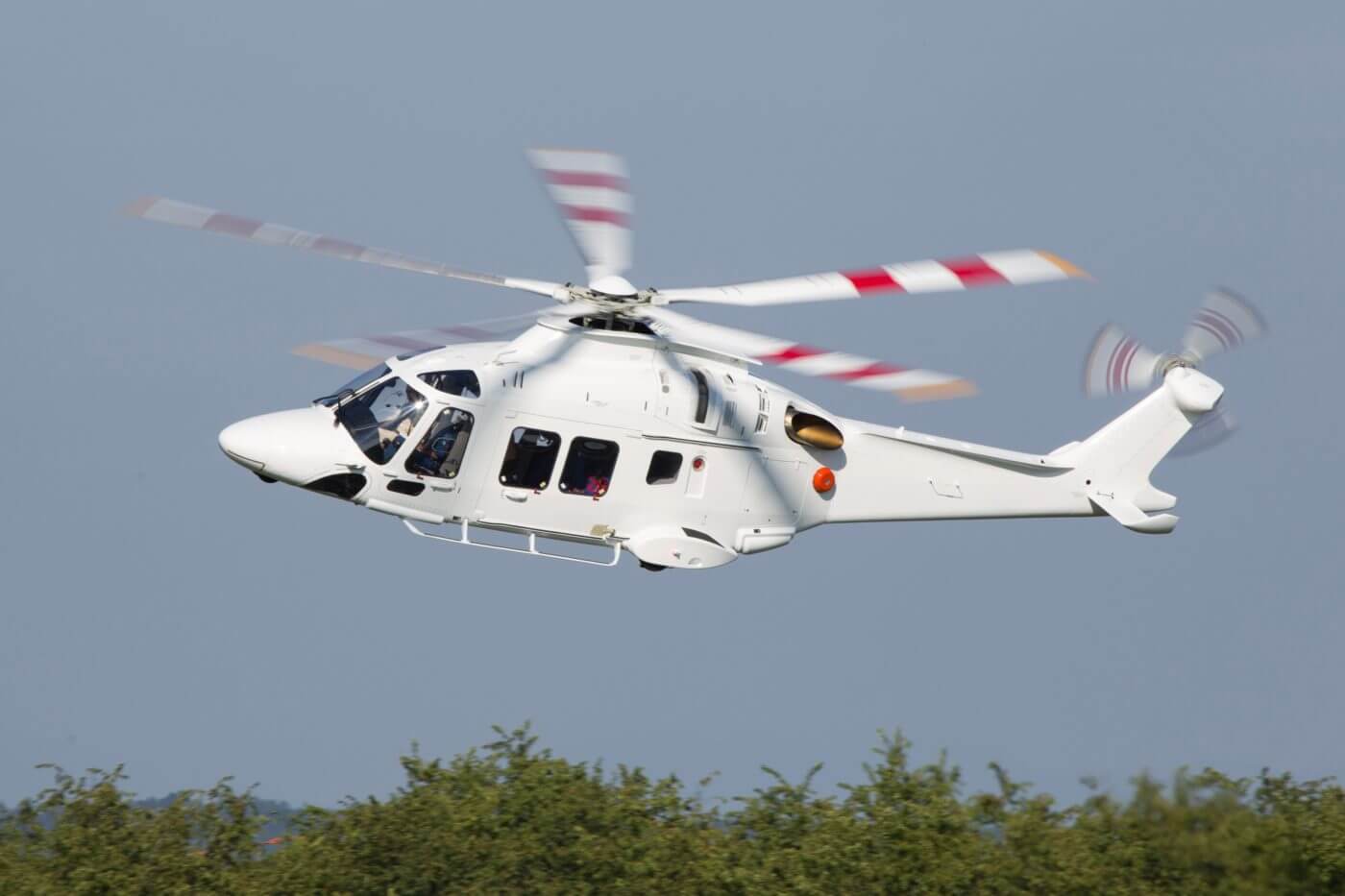Operators of Leonardo AW169 and AW189 helicopters have been instructed by the European Aviation Safety Agency (EASA) to conduct additional inspections of their tail rotor flight control systems.

In an emergency airworthiness directive (AD) issued Nov. 21, EASA calls for AW169 and AW189 operators to conduct an inspection and breakaway torque check of the tail rotor duplex bearing, and inspection and reinstallation of the tail rotor servo-actuator castellated nut, in accordance with an alert service bulletin issued by Leonardo.
These inspections are in addition to the requirements of an AD issued earlier this month, which called for AW169 and AW189 operators to check for correct installation of the tail rotor servo-actuator.
The ADs were prompted by the fatal crash of an AW169 in Leicester, England, on Oct. 27. The helicopter was departing King Power Stadium in Leicester when it spun out of control and crashed outside the stadium, killing five people, including Leicester City Football Club owner Vichai Srivaddhanaprabha.
Despite an intense post-crash fire, the United Kingdom’s Air Accidents Investigation Branch (AAIB) was able to download recordings from the aircraft’s digital flight recorder. In a special bulletin published on Nov. 14, the agency described the helicopter climbing on a rearward flight path through a height of approximately 320 feet before the climb paused.
“Heading changes consistent with the direction of pedal movements were recorded initially, then the helicopter entered an increasing right yaw contrary to the pilot’s left pedal command. The helicopter reached a radio height of approximately 430 feet before descending with a high rotation rate,” the bulletin states.
The AAIB has yet to identify a cause for the apparent loss of yaw control. According to EASA, its latest AD “is still considered to be an interim action and further AD action may follow.”
The AW189 is included in the AD because its tail rotor design is similar to that of the AW169.









